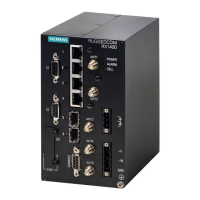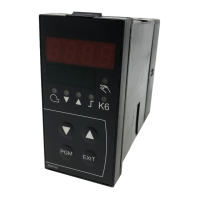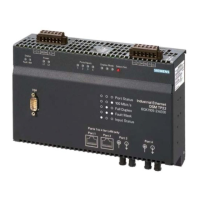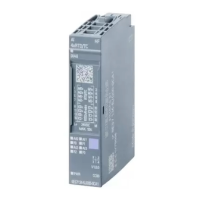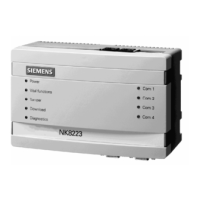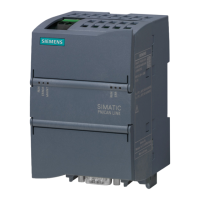Chapter 14
Network Redundancy
RUGGEDCOM ROX II
CLI User Guide
652 Deleting a Port-Specific Multiple Spanning Tree Instances
3. Configure the following parameter(s) as required:
Parameter Description
mstp-priority { mstp-priority } Synopsis: { 0, 16, 32, 64, 96, 112, 128, 144, 160, 176, 192, 208, 224, 240 }
Default: 128
The STP port priority. Ports of the same cost that attach to a common LAN will select the
port to be used based upon the port priority.
stp-cost { stp-cost } Synopsis: { auto-cost } or a 32-bit unsigned integer between 0 and 65535
Default: auto-cost
The cost to use in cost calculations, when the cost style parameter is set to STP in the
bridge RSTP parameter configuration. Setting the cost manually provides the ability
to preferentially select specific ports to carry traffic over others. Leave this field set to
'auto' to use the standard STP port costs as negotiated (four for 1Gbps, 19 for 100 Mbps
links and 100 for 10 Mbps links). For MSTP, this parameter applies to both external and
internal path costs.
rstp-cost { rstp-cost } Synopsis: { auto-cost } or a 32-bit unsigned integer between 0 and 2147483647
Default: auto-cost
The cost to use in cost calculations, when the cost style parameter is set to RSTP in the
bridge RSTP parameter configuration. Setting the cost manually provides the ability to
preferentially select specific ports to carry traffic over others. Leave this field set to 'auto'
to use the standard RSTP port costs as negotiated (20,000 for 1Gbps, 200,000 for 100
Mbps links and 2,000,000 for 10 Mbps links). For MSTP, this parameter applies to both
external and internal path costs.
4. Map one or more static VLANs and map them to the MSTI. For more information, refer to Section8.5.5.2,
“Adding a Static VLAN”.
5. Type commit and press Enter to save the changes, or type revert and press Enter to abort.
Section14.3.7.4
Deleting a Port-Specific Multiple Spanning Tree Instances
To delete a Multiple Spanning Tree Instance (MSTI) for a switched Ethernet port or an Ethernet trunk interface, do
the following:
1. Make sure the CLI is in Configuration mode.
2. Delete the MSTI by typing:
• For switched Ethernet ports:
no interface switch slot port spanning-tree msti id
Where:
▫ slot is the name of the module location
▫ port is the port number (or a list of ports, if aggregated in a port trunk) for the module
▫ id is the ID for the Multiple Spanning Tree Instance
• For Ethernet trunk interfaces:
no interface trunks id spanning-tree msti mstp-id
Where:
▫ id is the ID given to the interface
▫ mstp-id is the ID for the Multiple Spanning Tree Instance
3. Type commit and press Enter to save the changes, or type revert and press Enter to abort.
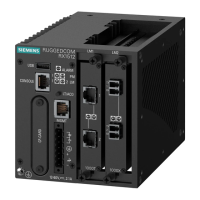
